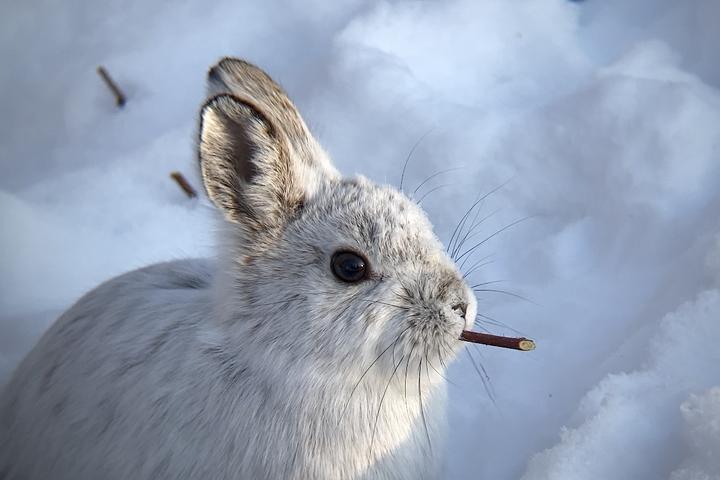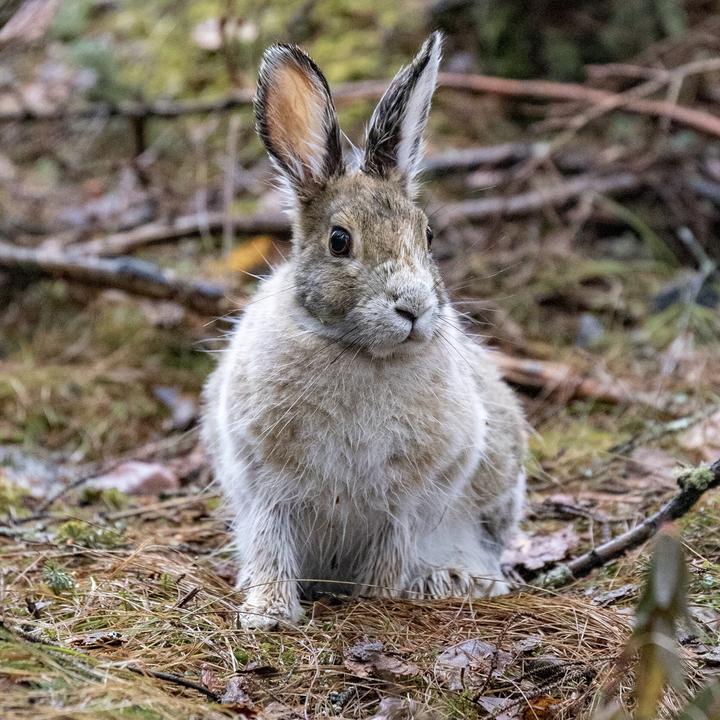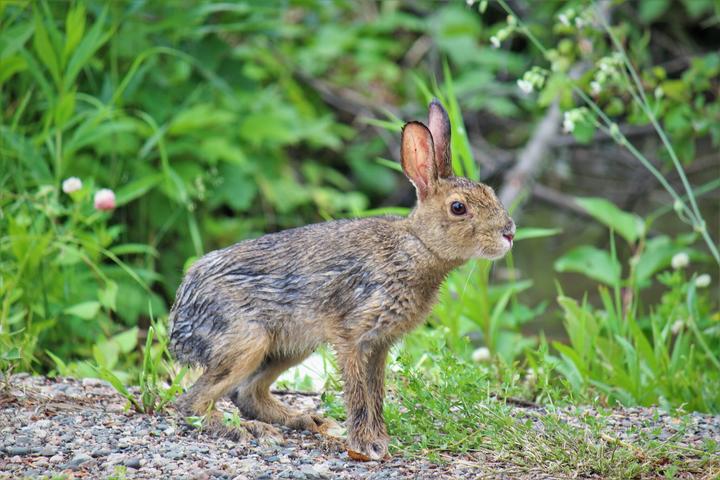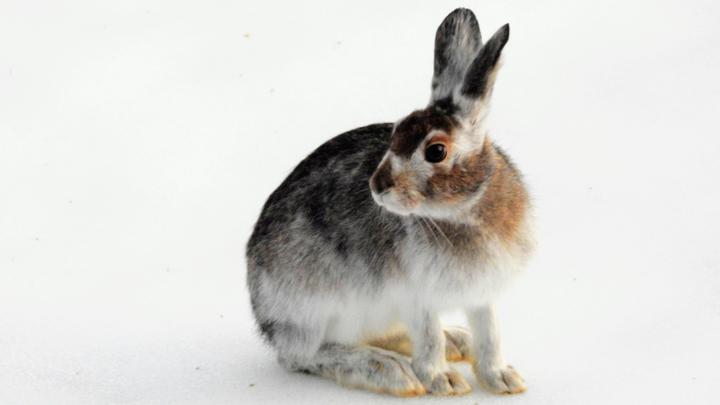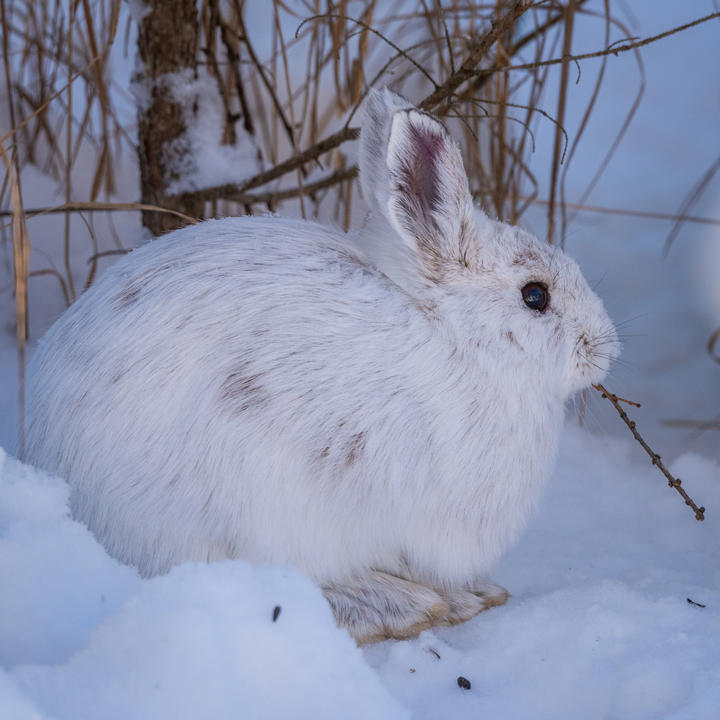More names for this animal
Anishinaabemowin: Waabooz
Dakota: Maṡtiŋca (rabbit)
The Dakota and Anishinaabe were among the earliest people to name Minnesota’s plants and animals, as well as to understand them in relation to Minnesota’s climate and seasons. Those original names are still in use, and several are included on the Season Watch website.
Latin (or scientific name): Lepus americanus
The scientific community has a convention of assigning agreed-upon Latin names to every kind of organism. Using scientific names helps people communicate confidently about the same organism and organize lifeforms based on how closely related they are.
Page contents
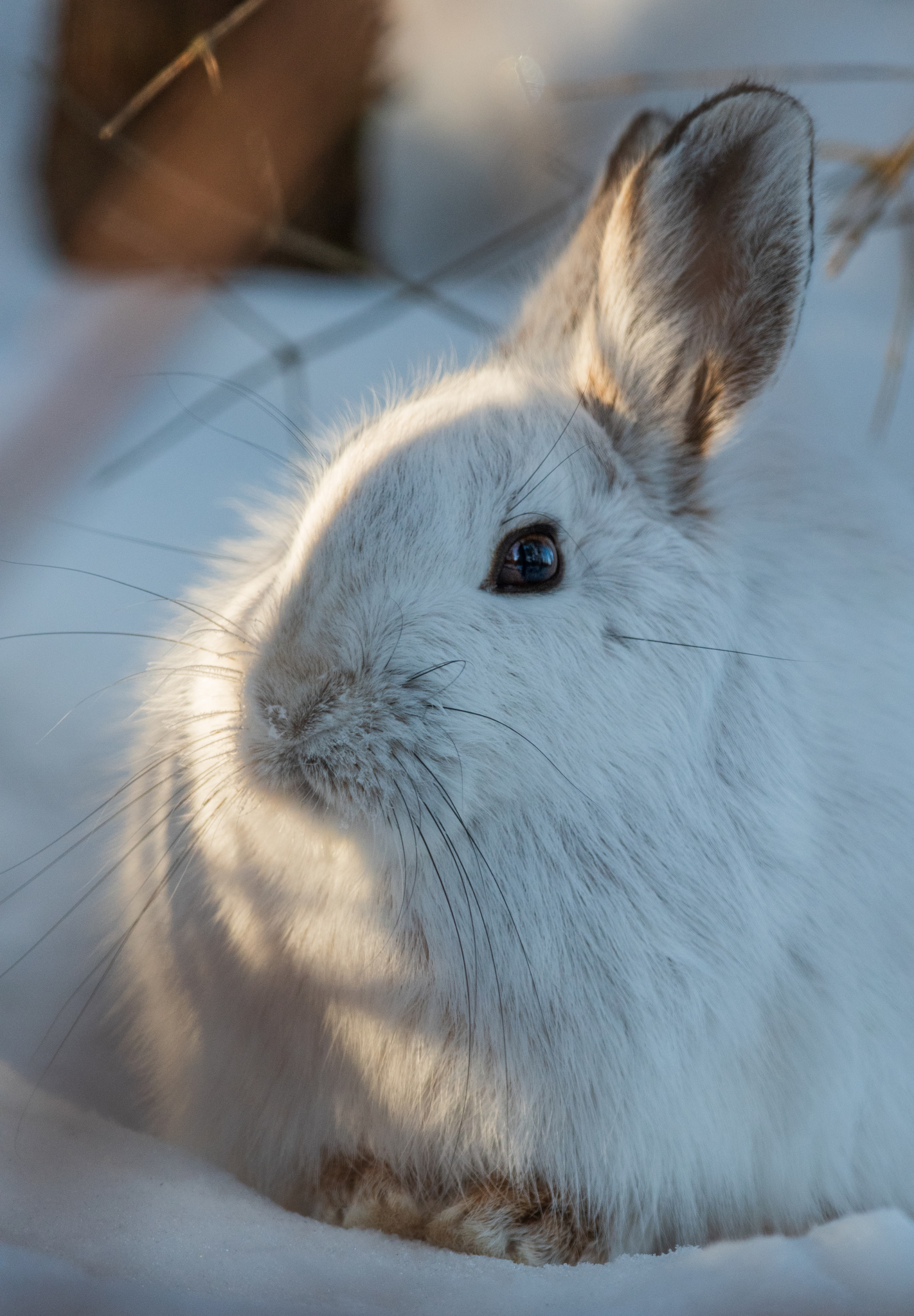
January 28, 2021, St. Louis County, Minnesota
Photo © jrheinen, some rights reserved (CC-BY-NC)
iNaturalist observation
About the snowshoe hare
- The snowshoe hare is a small mammal that lives in Minnesota's boreal forests.
- A snowshoe hare’s coat provides camouflage from predators. In summer, their coats are reddish-brown, allowing hares to blend in with the forest and soil. In winter, snowshoe hares are white, allowing them to blend in with snow and ice.
- Their hind feet are very large with dense hair. This adaptation prevents them from sinking into deep snow drifts. Their name comes from the appearance of their snowshoe-like feet.
- Snowshoe hare populations fluctuate in eight-to-eleven-year cycles. Variations in their numbers are linked to changes in food availability and the density of predators.
- Snowshoe hares gestate for about one month, giving birth to up to eight babies at a time. A female snowshoe hare can have multiple litters in a single breeding season.
- Fun fact: Snowshoe hares are nocturnal, meaning they are most active at night.
Visual guide to phenology
Watch for changes in the snowshoe hare's appearance and behaviors at different times of year.
Note to observers
This page explains general clues to watch and listen for when observing snowshoe hare phenology. However, this page does not explain how to identify this animal or collect data in a standardized way.
- For help with identification, see the Minnesota DNR's webpages on mammals.
- For guidance on collecting data, see Nature’s Notebook.
More resources
Keep exploring Season Watch
Keep exploring Season Watch
Co-author: Audrey Negro, Minnesota Master Naturalist
